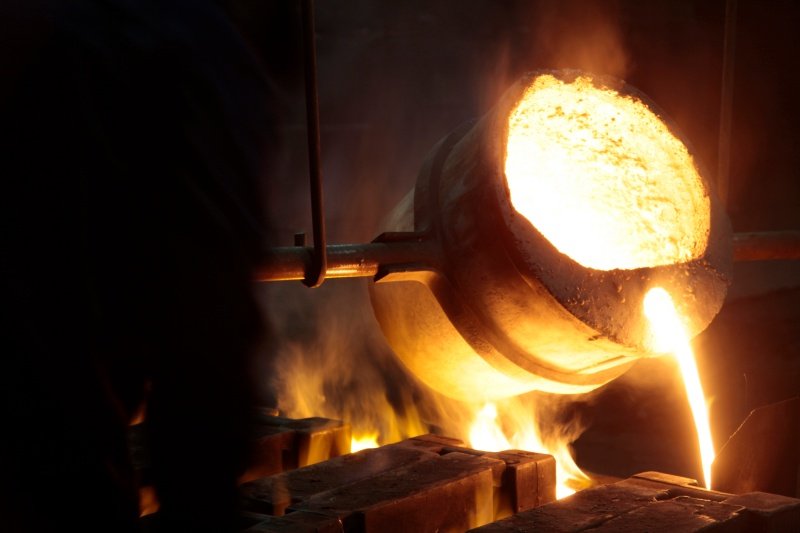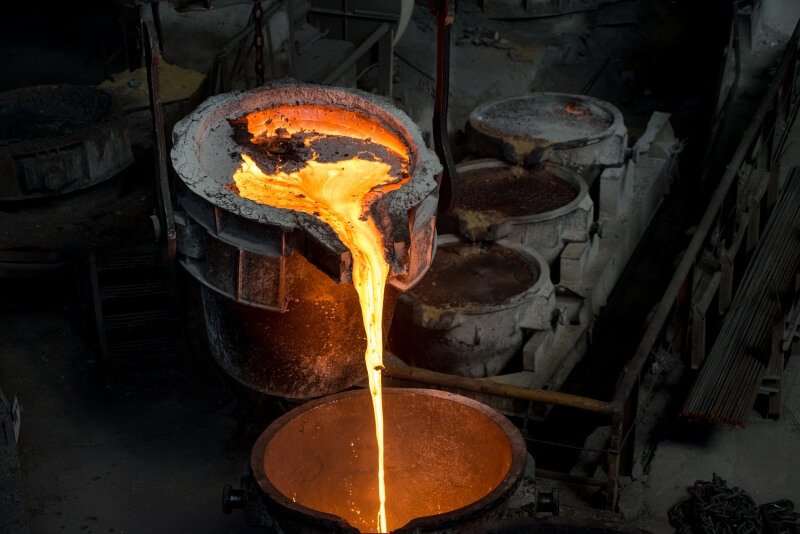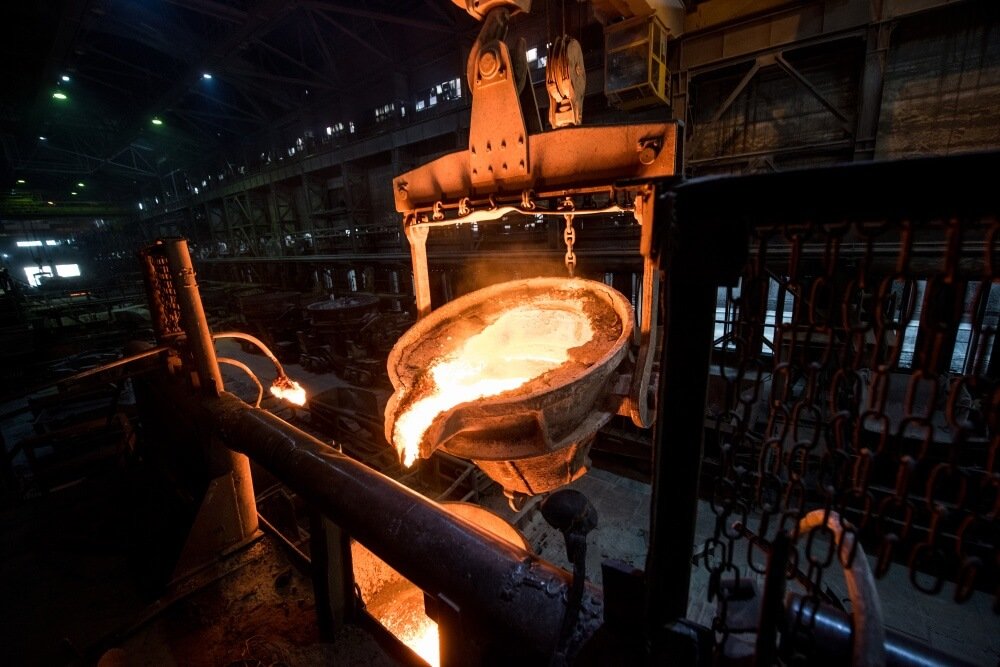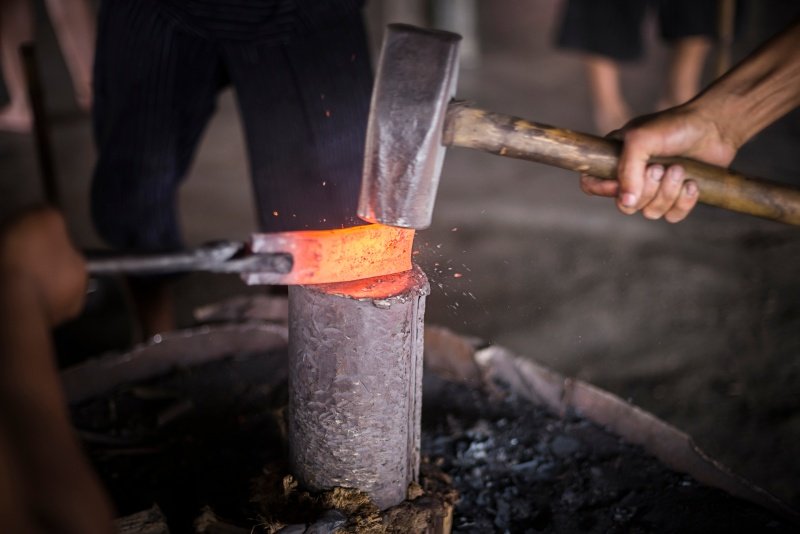Intro to stainless steel casting alloys
Selecting a metal for a critical component shouldn’t feel like a gamble. Choose wrong, and you risk early failures, safety issues, and costly delays. This guide cuts through the noise by outlining the benefits, core grades, and best-fit uses of stainless steel casting alloys, so you can make a confident, engineering-sound decision for performance and budget.
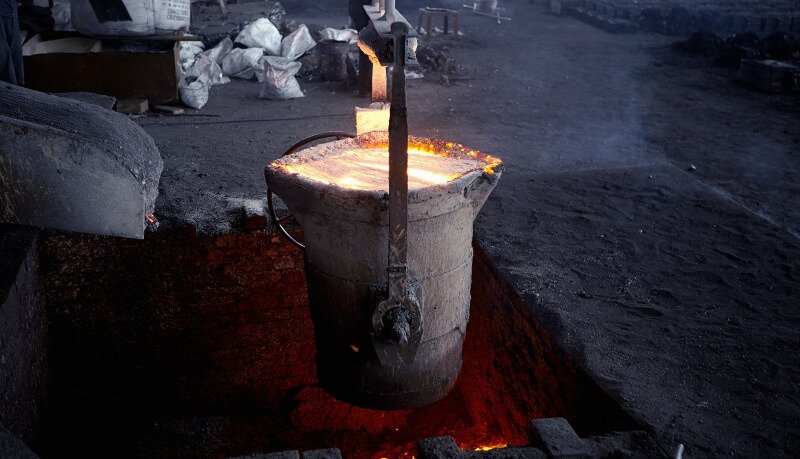
Key benefits of stainless steel casting alloys
Why use stainless steel for casting?
You should use stainless steel for investment casting when your component requires high corrosion and wear resistance. This process is ideal for creating parts with complex shapes and tight tolerances that are difficult to produce otherwise. Here’s the deal: investment casting delivers precision for your most demanding applications.
- Excellent for military applications
- Ideal for medical devices
- Great for industrial components
How does chromium affect the alloy?
Chromium is the defining element that gives stainless steel its signature resistance to corrosion. Higher percentages of chromium create a more robust protective layer on the steel’s surface. But that’s not all: this layer is passive and non-reactive, shielding the metal from environmental damage.
- All stainless steels have at least 10.5% chromium.
- Higher chromium equals greater corrosion resistance.
- Protects parts in harsh, corrosive environments.
What other elements are added?
Other elements are added to fine-tune the alloy’s properties for specific performance needs, such as weldability or strength. Nickel enhances ductility, while molybdenum boosts corrosion resistance even further. The bottom line is this: a low carbon content is critical for preventing carbide precipitation during welding.
- Nickel: Improves ductility and formability.
- Molybdenum: Enhances resistance to chemical corrosion.
- Low Carbon: Allows for welding without annealing.
Key Takeaway
| Alloying Ingredient | Primary Benefit |
|---|---|
| Chromium | Increases corrosion resistance |
| Nickel | Improves ductility and weldability |
| Molybdenum | Enhances corrosion resistance |
| Low Carbon | Prevents carbide precipitation during welding |
| This shows how the specific elemental makeup of stainless steel casting alloys is engineered to deliver precise performance characteristics for your application. |
Top stainless steel casting alloys
What is the most common alloy?
The most widely used grade in investment casting is 304 (CF-8), also known as 18/8 steel for its 18% chromium and 8% nickel content. It offers an excellent balance of strength, corrosion resistance, and high-temperature performance. Now, you might be wondering: what makes it so popular for manufacturing?
- Resists scaling at high temperatures.
- Can be welded without requiring post-weld annealing.
- Ideal for high-strength components in harsh settings.
What other grades are widely used?
Beyond the versatile 304 grade, several other alloys are specified for more demanding or specialized jobs. These include grades with enhanced corrosion resistance or those that can be hardened for extreme strength. Let me explain: each one serves a distinct engineering purpose.
- 316/316L: Superior corrosion resistance.
- 410/416: Can be hardened for high strength and wear.
- 17-4: A precipitation-hardening grade for extreme strength.
Key Takeaway
| Common Grade | Primary Use Case |
|---|---|
| 304 (CF-8) | General purpose, high-strength parts |
| 316 | Enhanced corrosion resistance |
| 304L/316L | Welded components in corrosive environments |
| 410/416 | High hardness and wear resistance |
| 17-4 | High-strength aerospace & industrial parts |
| While 304 is a popular workhorse, a diverse family of stainless steel casting alloys exists to meet more specialized industrial demands. |
304 grade stainless steel casting alloys
What defines 304 grade steel?
Grade 304 is defined by its composition of approximately 18% chromium and 8% nickel, which provides an excellent combination of strength and corrosion resistance. Its low carbon content is a key feature, making it highly versatile. What does this mean for you? It means you get a reliable, all-around performer for many applications.
- Excellent strength for demanding parts.
- Good resistance to corrosion and high heat.
- Known as 18/8 steel.
Why is low carbon important?
A low carbon content prevents the formation of chromium carbides along the grain boundaries when you weld the material. This ensures the steel retains its corrosion-resistant properties without needing a secondary annealing process. Think about it: this simplifies your manufacturing process and reduces costs.
- Prevents carbide precipitation.
- Allows for welding without subsequent annealing.
- Maintains corrosion resistance in welded areas.
Where is 304 grade best used?
The 304 and 304L grades are best used in applications requiring a blend of strength, weldability, and corrosion resistance. Common examples include components for marine, medical, and food processing industries. Here’s a quick example: it’s frequently used for flanges, valve components, and heat exchangers.
- Marine fittings and hardware
- Food and medical equipment
- Heat exchangers and valve components
Key Takeaway
| Grade | Key Feature | Common Applications |
|---|---|---|
| 304 (CF-8) | Good strength & corrosion resistance | Marine fittings, valve components, heat exchangers |
| 304L (CF-3) | Weldable without annealing | Food/medical equipment, marine hardware |
| The versatility of 304 and 304L grades makes them a reliable choice when you need to balance performance, weldability, and cost. |
Austenitic stainless steel casting alloys
What are austenitic steels?
Austenitic steels, which include the entire 300-series, are defined by their unique crystal structure, which is maintained from high temperatures down to room temperature. This structure is primarily achieved through the addition of nickel. So, what’s the secret? It’s the nickel that makes these steels non-magnetic, highly ductile, and easy to weld.
- Includes the popular 300-series grades (304, 316).
- Generally non-magnetic.
- Cannot be hardened by heat treatment.
How does nickel create this structure?
As the steel cools from a high temperature, nickel acts as an austenite stabilizer, preventing the internal structure from transforming. This preserves the face-centered cubic crystal structure that gives the alloy its desirable properties. It gets better: this structure is responsible for the material’s excellent formability and toughness.
- Stabilizes the austenitic crystal structure.
- Imparts high ductility and formability.
- Makes the steel easy to weld.
What are the main benefits?
The main benefits for your project are exceptional ductility and weldability, making these alloys ideal for fabricating complex components. You can easily form them into intricate shapes and weld them without compromising their structural integrity. The key is to remember: this makes post-cast assembly much simpler.
- High ductility for complex part formation.
- Excellent weldability for fabrication.
- Good toughness at a wide range of temperatures.
Key Takeaway
| Property | Benefit for Your Project | Enabled By |
|---|---|---|
| High Ductility | Can be formed into complex shapes easily | Austenitic structure |
| Weldability | Allows for fabrication and assembly post-casting | Austenitic structure |
| Understanding these properties is vital if your component design requires significant post-cast welding or forming. |
316 grade stainless steel casting alloys
What is unique about 316 grade?
What’s unique about grade 316 is the addition of molybdenum to its chemical composition. This element gives it significantly better corrosion resistance than grade 304, especially against chlorides and other industrial chemicals. Let’s dig a little deeper: this makes it the premier choice for parts exposed to harsh chemical environments.
- Contains molybdenum for superior corrosion resistance.
- Outperforms 304 grade in corrosive settings.
- Ideal for marine and chemical processing applications.
Where is 316L used?
The low-carbon version, 316L, is used in applications that require welding in highly corrosive or high-purity environments. You’ll find it in everything from medical implants to pressure-containing parts in chemical plants. For instance: it is essential for pharmaceutical equipment where purity and corrosion resistance are non-negotiable.
- Medical and pharmaceutical equipment
- Food processing and preparation equipment
- Pressure-containing fittings and flanges
Key Takeaway
| Grade | Environment | Common Applications |
|---|---|---|
| 316L (CF-3M) | Chemical / High Purity | Medical/pharmaceutical equipment, food equipment |
| 316 (CF-8M) | High Pressure / Marine | Fittings, flanges, pressure-containing parts |
| The applications for 316L clearly demonstrate its superior performance in chemically aggressive or high-moisture environments where other alloys might fail. |
400-series stainless steel casting alloys
What are 410 and 416 alloys?
Grades 410 and 416 are part of the martensitic family of stainless steels, known for their high strength and wear resistance. Unlike austenitic grades, you can harden them through heat treatment. Look at it this way: these alloys prioritize hardness and strength over the ductility of the 300-series.
- Martensitic, hardenable alloys.
- Offer high strength and wear resistance.
- They are magnetic.
How are they different from 300-series?
The key difference is that 400-series alloys can be heat-treated to achieve very high levels of hardness and strength. This comes at the expense of some corrosion resistance and ductility compared to the 300-series. Why is this important? It means you choose them when mechanical performance is more critical than corrosion resistance.
- Can be hardened by heat treatment.
- Offer higher strength but lower ductility.
- Focus on wear resistance and mechanical properties.
What are their common applications?
Grade 410 is often used for automotive parts, tools, and shafts, while 416 is prized for having the best machinability of any stainless steel. This makes it ideal for parts like valve components, gears, and pump parts that require extensive machining. Simply put: choose 416 when your part needs to be heavily machined.
- 410: Tools, bolts, shafts, and screws.
- 416: Valve parts, gears, and pump components.
- Automotive and industrial hardware.
Key Takeaway
| Grade | Key Feature | Common Applications |
|---|---|---|
| 410 (CA-15) | Hardened, high strength | Automotive components, tools, shafts, bolts |
| 416 (IC 416) | Hardened, high machinability | Valve parts, gears, pumps, machined parts |
| These alloys are your ideal choice when hardness, wear resistance, and strength are more critical than the high ductility of the 300-series. |
PH grade stainless steel casting alloys
Why are PH grades hardened?
PH, or “Precipitation Hardening,” grades are hardened through a specialized heat treatment process that creates extreme strength and hardness. This process allows them to combine the high strength of martensitic grades with the good corrosion resistance of austenitic grades. The result? A best-of-both-worlds material for demanding jobs.
- Combines high strength with good corrosion resistance.
- Hardened through a specific heat treatment process.
- Creates superior mechanical properties.
Which PH grades are common?
The most common PH grades you will encounter are 17-4 PH, 15-5 PH, and 13-8 PH. Each offers a unique balance of strength, toughness, and corrosion resistance tailored for specific high-performance applications. Let’s break it down: 17-4 PH is a popular workhorse, while 15-5 and 13-8 offer further refinements.
- 17-4 PH: Very high strength and hardness.
- 15-5 PH: High strength with good toughness.
- 13-8 PH: Excellent strength for aerospace use.
What are their primary uses?
You’ll find these alloys in the most demanding industries, including aerospace, defense, and energy, where component failure is not an option. They are used for critical parts like aerospace components, motor shafts, and engine parts. Here’s the takeaway: PH grades are for applications where maximum reliability and strength are paramount.
- Aerospace and defense components.
- High-performance pumps and motor shafts.
- Engine parts and gas turbine components.
Key Takeaway
| Grade | Key Feature | Common Applications |
|---|---|---|
| 17-4 PH | Very high strength & hardness | Aerospace parts, motor shafts, pumps |
| 15-5 PH | High strength, good toughness | Engine parts, marine turbine components, gears |
| 13-8 PH | Excellent strength | Aerospace components, injection molding tools |
| PH grades provide the ultimate strength and reliability required for the most demanding, safety-critical applications where failure is not an option. |
Choosing the right stainless steel casting alloys
What should you consider first?
Before selecting an alloy, you must first identify the most critical requirements of your application. Consider the operating environment, the mechanical stresses the part will endure, and any post-casting processes like welding or machining. The first step is always: to define your non-negotiable performance criteria.
- Environment: Will it be corrosive or high-temperature?
- Strength: What are the load-bearing requirements?
- Fabrication: Does it need to be welded or machined?
How can Precisionvast help?
With over 100 years of experience, our material experts can help you navigate the complexities of alloy selection. We pour over 50 standard alloys and can develop custom formulations to meet your exact engineering specifications. It’s that simple: we partner with you to ensure your component has the ideal material properties for success.
- Access to over 50 standard alloys.
- Expertise in developing custom alloys.
- Engineering guidance to match material to application.
Key Takeaway
| If You Need… | Consider These Alloys |
|---|---|
| High Corrosion Resistance | 316L, 304L |
| High Strength & Hardness | 410, 416, PH Grades |
| Weldability & Ductility | 304, 304L, 316L |
| Extreme Performance | 17-4 PH, 15-5 PH |
| Selecting the right alloy involves balancing these performance needs, and expert consultation ensures you achieve the optimal outcome for your project’s success and budget. |
FAQ: stainless steel casting alloys
Can I get a custom alloy for my project?
Yes, you certainly can. If standard alloys do not meet your unique performance requirements, custom alloys can be formulated with specific chemistries and mechanical properties to match your exact specifications.
What’s the best alloy for food equipment?
The best choice is typically grade 304L or 316L. Their low carbon content makes them highly weldable and easy to clean, while their excellent corrosion resistance ensures they won’t contaminate food products.
What’s the best alloy for aerospace parts?
Precipitation-hardening (PH) grades like 17-4 PH, 15-5 PH, and 13-8 PH are the best alloys. They offer the extremely high strength-to-weight ratio and reliability required for critical aerospace applications.
Can these alloys be welded?
Yes, but weldability varies greatly between grades. Austenitic grades like 304L and 316L are designed for excellent weldability, while hardenable 400-series grades are more challenging and may require special procedures.
What’s the difference between 304 and 304L?
The primary difference is the carbon content. The “L” in 304L stands for “low carbon,” which improves its weldability by preventing carbide precipitation and preserving corrosion resistance in the welded area.
Get the Right Alloy for Your Application
You no longer need to guess which stainless steel casting alloys are right for your critical components. This guide has armed you with the foundational knowledge of key grades, their properties, and their ideal applications. With over 100 years of experience, Precisionvast pours more than 50 standard and custom-formulated stainless steel alloys to meet your exact engineering specifications. We pride ourselves on being a name synonymous with quality, delivering precision-cast components for the world’s most demanding industries. Ready to ensure your component has the perfect material properties? Contact us today, and let our experts help you select the ideal stainless steel casting alloy for your project.

